

Cranes have played a significant role in construction for centuries, enabling workers to lift and move heavy materials and equipment with ease. There are a variety of crane types used in construction today, each with its unique features and advantages. In this article, we will explore different types of cranes used in construction, including truck cranes, all-terrain cranes, tower cranes, and more. By understanding the characteristics and applications of each type of crane, you can make informed decisions about which one is best suited for your construction needs. Let's dive in and explore the different types of cranes used in construction!
Truck cranes are one of the most versatile types of cranes used in construction. They offer the mobility of a truck combined with the lifting power of a crane, making them ideal for a range of applications. From loading and unloading heavy materials to hoisting equipment to elevated work areas, truck cranes can handle a variety of tasks with ease. In this section, we will take a closer look at truck cranes and their features, benefits, and typical applications. Whether you are a contractor, builder, or engineer, understanding the capabilities of a truck crane can help you to make informed decisions about which crane type is best suited for your project.
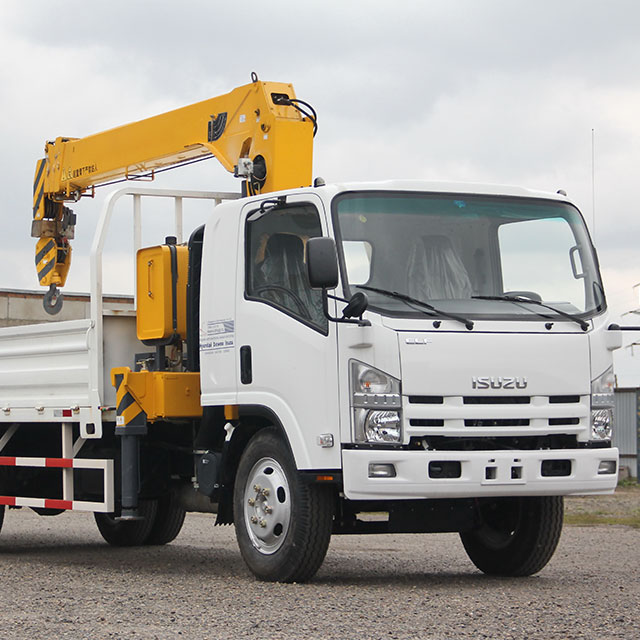
A boom truck, also known as a knuckle boom truck, is a type of crane that combines the mobility of a commercial truck with the lifting capabilities of a crane. The crane is mounted on the back of a truck and is operated by a hydraulic system that controls the boom, allowing for precise movements.
Compared to other types of cranes, a boom truck is generally more compact and versatile, which makes it ideal for use in tight or confined spaces where larger cranes cannot operate. The knuckle boom on a boom truck is also more flexible than the boom on a traditional crane, which allows it to reach over obstacles or lift materials up and over obstacles.
Boom trucks are commonly used in construction, landscaping, and forestry industries, where they can be used to lift and move heavy materials, equipment, and machinery. They are often used in residential construction projects, such as roofing or framing, where they can lift heavy building materials to the upper levels of a structure. Boom trucks are also commonly used in utility work, such as lifting power poles or installing signage.
One of the main advantages of a boom truck is its versatility. It can perform a wide range of lifting and material handling tasks in various environments, including urban areas where space is limited. Additionally, boom trucks can be fitted with a variety of attachments, such as buckets, forks, and grapples, to perform specific tasks.
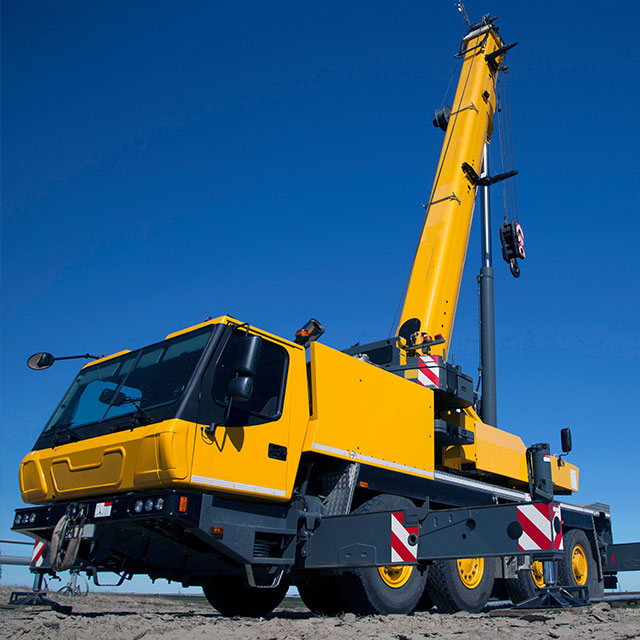
An all-terrain crane is a versatile type of crane that is designed to operate in a wide range of environments, including rough terrain and urban areas. It is equipped with both on-road and off-road capabilities, allowing it to move easily between construction sites and navigate rough terrain.
All-terrain cranes are typically mounted on a truck or trailer and feature a telescoping boom that can be extended to reach high elevations. They are also equipped with multiple axles and high-performance suspension systems, which allow them to navigate rough terrain with ease.
One of the key advantages of an all-terrain crane is its versatility. It can be used in a variety of scenarios, including construction sites, industrial facilities, and even remote locations. Its ability to navigate rough terrain and operate in tight spaces makes it an ideal choice for construction projects in urban areas, where space is limited.
All-terrain cranes are also designed to be highly maneuverable, which makes them well-suited for use in projects with tight schedules or strict deadlines. They can be quickly set up and taken down, which allows for efficient use of time and resources.
In addition to their versatility and maneuverability, all-terrain cranes are also equipped with advanced safety features, such as automatic leveling systems and load sensors. These features help to ensure that the crane can operate safely and efficiently, even in challenging environments.
All-terrain cranes are typically used in a variety of construction projects, including building construction, infrastructure projects, and mining operations. They are also commonly used in the oil and gas industry, where they are used to lift heavy equipment and materials to remote locations.
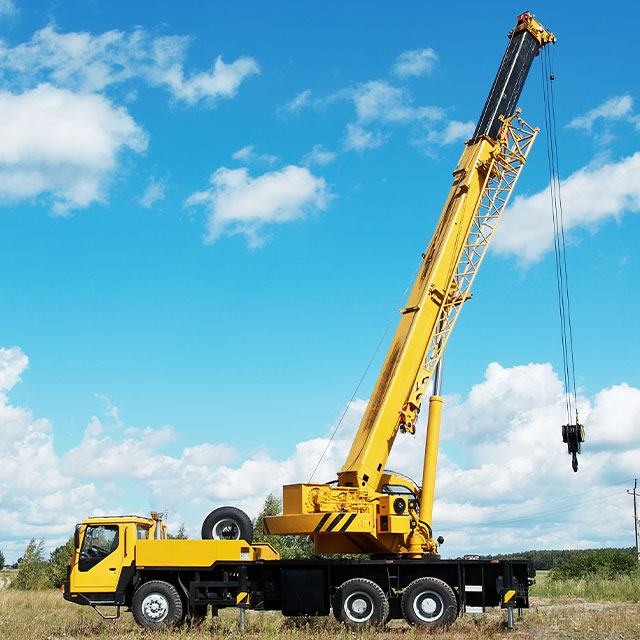
A truck-mounted telescopic boom crane is a type of mobile crane that is mounted on the bed of a truck and features a telescopic boom. The telescopic boom is made up of a series of nested tubes that can be extended and retracted to different lengths, depending on the job requirements.
One of the primary uses of a truck-mounted telescopic boom crane is for lifting and moving heavy loads. It is commonly used in construction sites, warehouses, and factories for tasks such as loading and unloading materials, moving heavy equipment, and erecting steel structures. Its mobility and ability to quickly move from site to site make it an ideal tool for a variety of applications.
One of the primary benefits of a truck-mounted telescopic boom crane is its versatility. The telescopic boom can be extended and retracted to different lengths, providing flexibility and allowing it to be used for a wide range of tasks. It can also be equipped with a variety of attachments, such as buckets or grapples, to perform tasks beyond lifting and moving heavy loads.
Another benefit of a truck-mounted telescopic boom crane is its compact size. It can be mounted on a variety of truck chassis, including those with smaller footprints, making it a useful tool in tight spaces or urban environments where larger cranes may not be able to maneuver.

A truck-mounted lattice boom crane is a type of mobile crane that is designed to be mounted on the bed of a truck. It features a lattice boom, which is a series of interlocking steel sections that can be extended to different lengths, depending on the model.
One of the key features of a truck-mounted lattice boom crane is its mobility. It is mounted on a truck chassis, which allows it to be driven to different job sites and quickly set up for use. This makes it an ideal tool for construction companies and contractors who need to move their equipment from site to site.
Another key feature of a truck-mounted lattice boom crane is its lifting capacity. It is designed to lift heavy loads and can typically lift between 30 and 500 tons, depending on the model. This makes it ideal for use in construction projects that require heavy lifting capabilities.
The lattice boom design of a truck-mounted lattice boom crane also offers several advantages. The interlocking steel sections of the boom provide strength and stability, which allows the crane to lift heavy loads to great heights. Additionally, the lattice design of the boom allows it to be extended to different lengths, depending on the job requirements. This provides flexibility and versatility, allowing the crane to be used for a wide range of tasks.
While truck-mounted cranes provide mobility and versatility, they may not always be suitable for every construction or lifting task. In situations where a more heavy-duty, specialized crane is required, less mobile cranes may be the solution. These types of cranes may still be mobile but are not mounted on trucks, allowing for greater lifting capacity and stability. In this section, we will explore some of the less mobile cranes commonly used in the construction industry and their unique features and benefits.
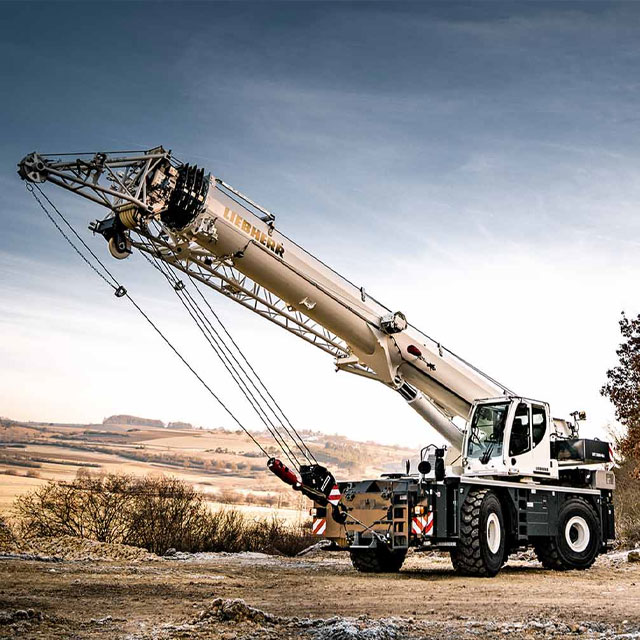
A rough terrain crane is a type of mobile crane that is designed to operate in off-road and rough terrain environments. It is typically mounted on a four-wheel drive chassis and features large, heavy-duty tires that allow it to traverse rugged terrain with ease.
One of the key features of a rough terrain crane is its ability to operate in areas that are inaccessible to other types of cranes. It is often used in construction projects in remote locations, such as oil and gas fields or mining sites, where the terrain is rough and uneven.
Another key feature of a rough terrain crane is its lifting capacity. It is designed to lift heavy loads and can typically lift between 30 and 150 tons, depending on the model. This makes it ideal for use in construction projects that require heavy lifting capabilities.
Rough terrain cranes also feature telescoping booms that can extend to various lengths, depending on the model. This allows them to reach high elevations and lift heavy loads to great heights. Additionally, many rough terrain cranes are equipped with outriggers, which provide additional stability when lifting heavy loads.
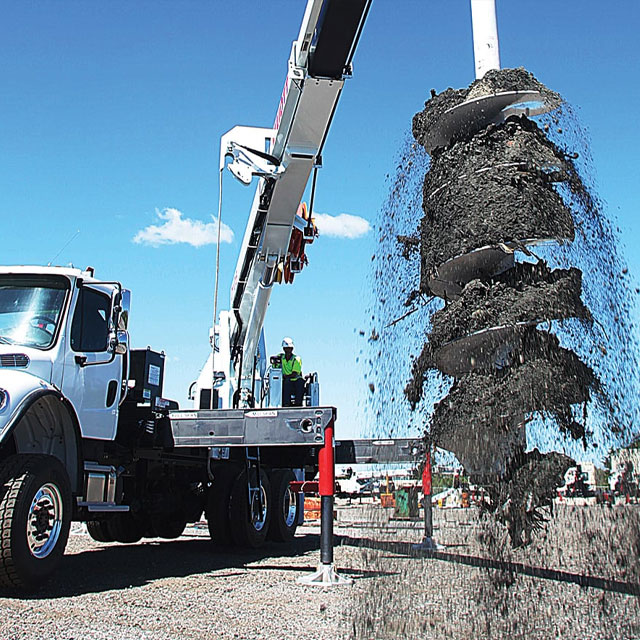
A digger derrick crane, also known as a derrick truck, is a specialized type of mobile crane that is used for digging, lifting, and placing objects. It is typically mounted on a truck chassis and features a hydraulic system that powers the crane and digging equipment.
The primary use of a digger derrick crane is for digging holes and placing poles for utilities such as electrical, telephone, and cable companies. This type of crane is designed to handle a variety of tasks, from digging holes for poles to lifting and placing heavy equipment on utility poles.
One of the main benefits of a digger derrick crane is its versatility. It is capable of performing a wide range of tasks, making it a valuable tool for utility companies and construction crews. Additionally, its mobility and ease of use make it ideal for use in tight spaces and on job sites with limited access.
Another benefit of a digger derrick crane is its lifting capacity. It is designed to lift heavy loads and can typically lift between 10 and 30 tons, depending on the model. This makes it an ideal tool for lifting and placing heavy equipment on utility poles, such as transformers and other electrical equipment.

A crawler telescopic boom crane is a powerful and versatile mobile crane that is equipped with a telescopic boom and a set of tracks, or crawlers, instead of wheels. The tracks provide stability and enable the crane to move and lift heavy loads over rough or uneven terrain. The telescopic boom can be extended to various lengths, allowing the crane to reach great heights and work in a variety of environments.
One of the primary advantages of a crawler telescopic boom crane is its ability to work on unstable ground conditions. The tracks distribute the weight of the crane over a larger area, making it less likely to sink into soft or muddy ground. This makes the crane ideal for working on construction sites that are in the early stages of development or for projects that require lifting and moving heavy loads over difficult terrain.
Crawler telescopic boom cranes are also known for their lifting capacity. With their heavy-duty design and stability, they are capable of lifting extremely heavy loads, making them ideal for industrial and construction projects that require lifting large machinery or equipment.
Another benefit of a crawler telescopic boom crane is its versatility. The telescopic boom can be extended to different lengths, and the crane can be equipped with a range of attachments, such as buckets, grapples, or jibs, to perform various lifting and moving tasks.

A carry deck crane is a versatile mobile crane that is commonly used in indoor or tight space construction sites. This type of crane is compact in design and has a small deck for lifting and transporting materials. The crane is equipped with a cab for the operator and a small engine to power the crane.
One of the primary advantages of a carry deck crane is its ability to work in tight spaces. The compact design of the crane allows it to move and lift materials in areas that larger cranes may not be able to access. This makes the crane ideal for working in confined spaces or indoor construction projects, such as warehouses or manufacturing facilities.
Another benefit of a carry deck crane is its versatility. The small deck can be used to lift and transport a variety of materials, including pallets, equipment, and tools. The crane can also be equipped with a range of attachments, such as jibs or hooks, to perform various lifting and moving tasks.
Additionally, carry deck cranes are designed for easy transportation. The compact size of the crane makes it easy to transport from one job site to another, and the small engine reduces fuel consumption, making it a cost-effective solution for small construction projects.
However, it's important to note that carry deck cranes have a lower lifting capacity compared to larger mobile cranes, limiting their use to smaller projects. The small size of the crane can also make it less stable when lifting heavy loads, making it important for operators to take extra precautions to ensure the safety of the project and workers.
Stationary cranes are a vital component of modern construction sites, where they are used for lifting and moving heavy loads with precision and efficiency. These cranes are typically mounted on a fixed structure such as a building, bridge or tower, and are designed to operate in a fixed location for extended periods. In this section, we will explore the various types of stationary cranes used in construction, their features, and how they are used to improve efficiency and safety in the construction industry.

A tower crane is a type of crane that is used to lift heavy materials and equipment to great heights. It is typically used in large construction projects, such as high-rise buildings, where its height and lifting capacity are essential for the construction process.
A tower crane consists of a vertical mast or tower, which is anchored to the ground, and a horizontal jib or boom that extends out from the top of the tower. The jib is supported by cables or ropes that run from the top of the tower to a counterweight at the base. The crane operator controls the crane from a cab at the top of the tower, using a system of pulleys, gears, and motors to move the jib and lift heavy loads.
One of the key advantages of a tower crane is its height and lifting capacity. It can lift heavy materials and equipment to heights of up to 265 feet or more, making it ideal for use in tall buildings and other large-scale construction projects. The jib of a tower crane can also be extended or retracted as needed, allowing it to reach different areas of the construction site.
Another advantage of a tower crane is its stability. The vertical mast or tower is anchored to the ground, providing a solid foundation for the crane to operate from. This allows the crane to lift heavy loads with precision and accuracy, even in windy or inclement weather conditions.
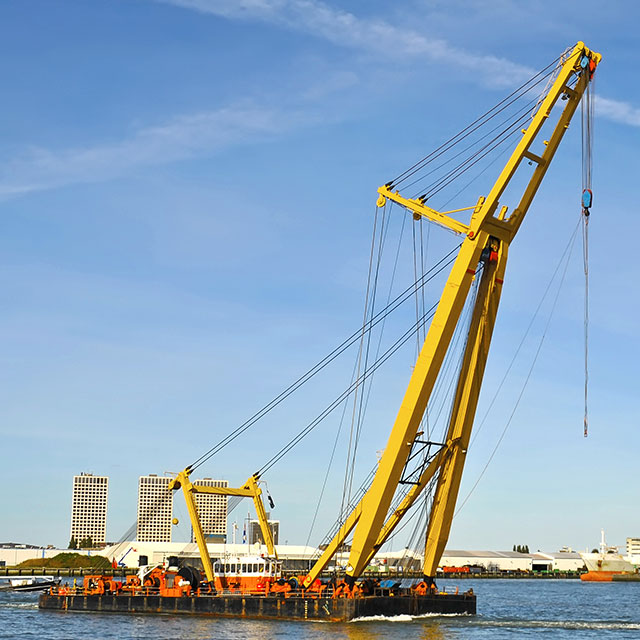
A floating crane, also known as a crane vessel, is a type of crane that is mounted on a barge or a ship for use in marine construction projects. Floating cranes are particularly useful for projects that require lifting heavy loads and materials over water, such as bridge construction or offshore oil rig installation.
One of the main advantages of a floating crane is its ability to transport large and heavy loads over water. The crane vessel can navigate to different locations, making it a versatile option for marine construction projects. Additionally, floating cranes can often lift heavier loads compared to land-based cranes due to the stability provided by the barge or ship.
Another advantage of a floating crane is its ability to work in challenging weather conditions. The stability provided by the barge or ship can help to minimize the impact of rough seas and high winds, allowing the crane to continue operating in conditions that may otherwise halt land-based cranes.
However, working with a floating crane requires specialized skills and knowledge. The crane operator must be experienced in navigating and positioning the crane vessel in different marine environments. Safety protocols must also be followed to ensure the stability of the barge or ship during lifting operations.

A hammerhead crane is a type of tower crane that is often used in the construction of tall buildings and other large-scale projects. The crane gets its name from its distinctive shape, with a horizontal beam (known as a jib) that extends from a vertical mast, resembling the shape of a hammerhead shark.
One of the main advantages of a hammerhead crane is its ability to reach great heights and lift heavy loads. The jib of the crane can be extended to a significant length, and the crane can be positioned in different areas on the construction site to maximize its reach. This makes it a useful tool for projects that require heavy lifting and precise placement of materials at high elevations.
Hammerhead cranes also have a relatively small footprint, which is useful in crowded construction sites with limited space. They can be erected quickly and easily, and their modular design means they can be disassembled and transported to different sites as needed.
However, there are some limitations to using a hammerhead crane. They require a stable foundation and careful planning to ensure safe operation, especially in high wind conditions. The crane's reach is limited to the length of the jib, which means that it may not be suitable for projects that require long horizontal reach. Additionally, the crane's operation is limited to a vertical plane, which may require additional equipment and labor for horizontal movement of materials.
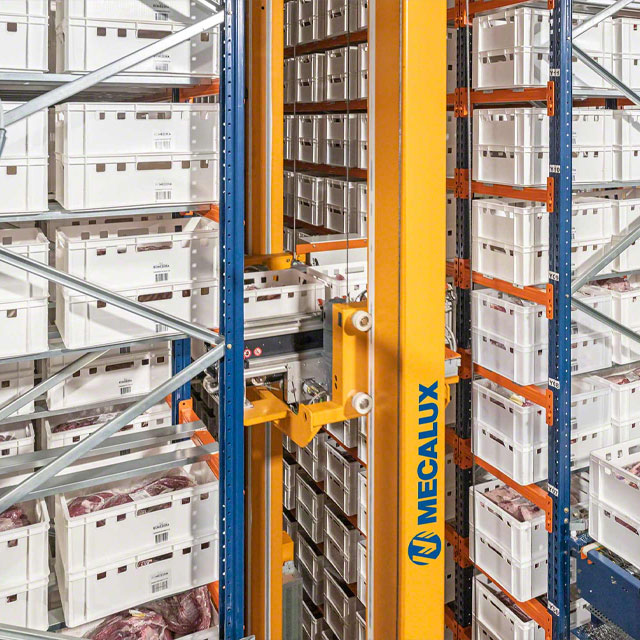
A stacker crane is a type of crane commonly used in warehouses and distribution centers to move and store large amounts of materials in a high-density storage configuration. They are designed to work in narrow aisles and can be either automated or operated manually.
The crane is typically made up of a vertical mast that is mounted on a movable base and a horizontal carriage that can move along the mast. The carriage is equipped with a fork-like device that can lift and transport pallets of materials to and from the storage racks.
One of the main advantages of a stacker crane is its ability to maximize vertical storage space. The crane can reach heights of up to 120 feet or more, allowing for efficient use of floor space in large facilities. They are also designed for high-speed movement and can transport materials quickly and efficiently to different locations within the warehouse.
In addition, stacker cranes can be operated remotely, making them a safe and efficient way to move materials in environments where human workers may be at risk. They can also be programmed to optimize storage and retrieval based on factors such as product weight and size, improving overall efficiency and reducing the risk of damage to materials.
However, there are some limitations to using a stacker crane. They require a dedicated space and infrastructure to operate, including specialized storage racks and pallets. Additionally, they may not be suitable for handling irregularly shaped or oversized materials that cannot fit onto standard pallets.
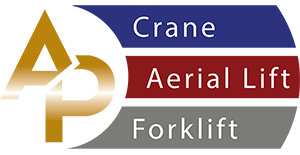
An All Purpose Safety Training Solutions Company